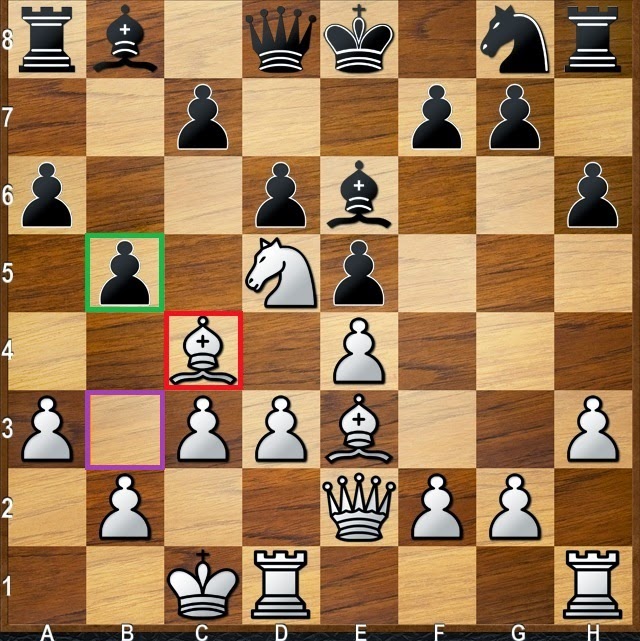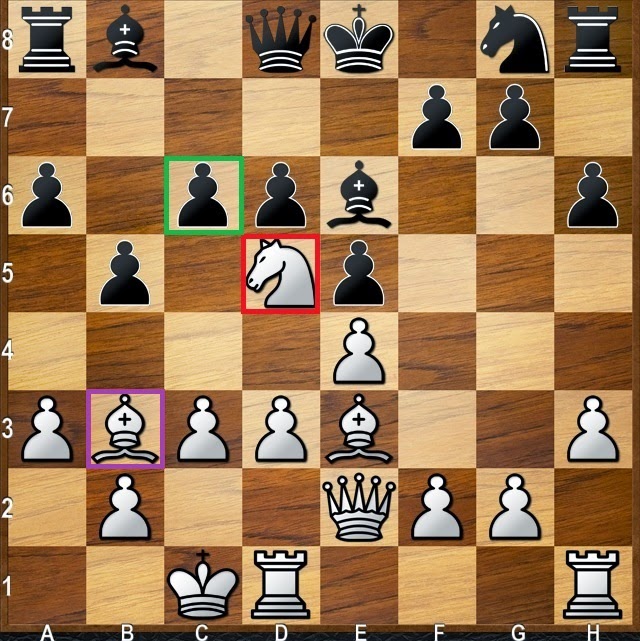A sacrifice is a move which deliberately allows the loss of material, either because the player can win material back, have positional compensation, deliver checkmate, or avoid losing.
- Most pieces are capable of various sacrifices, but the king of course can never be sacrificed.
Since there are many different types of sacrifices it will be burdensome to fill your heads with all of them before you understand the overall purpose of each. There are really only 4 primary goals of sacrifices and they are:
We're going to discuss each sacrifice based on what it accomplishes so you as the player can have an idea of when and in what situation calls for one. Keep in mind that certain sacrifices may have more than one benefit. So let's dive into the various types of sacrifices.
One of the goals of a sacrifice is to gain better positioning on the board. It could be better positioning for either development, attacking your opponent, attacking parts of the board, or pursuing an attack on the king. In these cases, the positioned gained is greater than the piece sacrificed.
A. Gambit sacrifices- In a gambit sacrifice a player gives up a pawn to control the center of the board or to set up an attack on the king. There are many types of opening gambits such as the Queen's, King's, Icelandic, Scotch, & Evans.
B. Strategic sacrifices- Much similar to the gambit ploy but usually appearing much later in a chess game, strategic sacrifices are made to give a player a better positioning of the board or a better position to attack the king. Some examples are bishop sacrifice, attempted queen trap, & multiple sacrifices to pursue king, (Also see the 5 greatest chess sacrifices)
C. Simplification/Liquidation- A player ahead in material may decide that it is worthwhile to exchange pieces with his opponent and use his remaining material and position to win. Example 1, Example 2.
Another goal of sacrificing is simply to gain material. A player may give up a less valuable piece to gain a more valuable piece or they may give up a more valuable piece for 2 or more less valuable pieces. A sacrifice may be made to promote a pawn as well.
A. Gain material- Gaining material by a sacrifice example 1.
B. Desperado- A piece that seems determined to give itself up to sell itself as dearly as possible in a situation where both sides usually have hanging pieces. Example 1, Example 2.
One of the best times to sacrifice is when it ensures either an immediate or soon to be checkmate.
A. Sacrificing to exploit the king- Gaining a victory soon after sacrificing the queen example 1.
(See also the 5 greatest chess sacrifices which highlight how sacrifices can lead to eventual mates.)
Another good time to sacrifice a piece is to force a draw in a game that otherwise can't be won.
A. Sacrifice to avoid losing- Avoiding a loss by making a sacrifice example 1.
B. Desperado- A piece that seems determined to give itself up to bring about stalemate if it is captured, or in some instances, to force a draw by threefold repetition if it is not captured. Example 1.
So there you have it. The 4 overall benefits of sacrificing pieces in chess. Below I've started a list of many chess sacrificing terms that are either based on the tactics used or simply unique sacrificing situations. (Feel free to comment on terms that are not listed below, or alternative names for each that I may have overlooked :)
Anti-Castling Sacrifice
Blank Sac (Magnet Sac)
Blocking (Obstruction) Sacrifice
Center Fork Trick
Classic Bishop Sacrifice
Clearance Sacrifice
Decoy Sacrifice
Deflection Sacrifice
Development Sacrifice
Demolition (Destruction) Sacrifice
Double Bishop Sacrifice
Double Sacrifice
En Prise Sacrifice
Equalizing Sacrifice
Exchange Sacrifice
Gain Sacrifice
Hanging a Piece Sacrifice
King-Hunt Sacrifice
King's Field Sacrifice (Castled)
Lasker's Sacrifice
Line Clearance Sacrifice
Mate Sacrifice
Poisoned Pawn
Positional Sacrifice
Preventative Sacrifice
Queen Sacrifice
Real Sacrifice
Sacrifice of Pawns
Sacrificial Waterfall
Sham (Pseudo) Sacrifice
Speculative Sacrifice
Suicide Sacrifice
Trade Sacrifice
Tempo Sacrifice
Vacating Sacrifice
Another good time to sacrifice a piece is to force a draw in a game that otherwise can't be won.
A. Sacrifice to avoid losing- Avoiding a loss by making a sacrifice example 1.
B. Desperado- A piece that seems determined to give itself up to bring about stalemate if it is captured, or in some instances, to force a draw by threefold repetition if it is not captured. Example 1.
So there you have it. The 4 overall benefits of sacrificing pieces in chess. Below I've started a list of many chess sacrificing terms that are either based on the tactics used or simply unique sacrificing situations. (Feel free to comment on terms that are not listed below, or alternative names for each that I may have overlooked :)
Anti-Castling Sacrifice
Blank Sac (Magnet Sac)
Blocking (Obstruction) Sacrifice
Center Fork Trick
Classic Bishop Sacrifice
Clearance Sacrifice
Decoy Sacrifice
Deflection Sacrifice
Development Sacrifice
Demolition (Destruction) Sacrifice
Double Bishop Sacrifice
Double Sacrifice
En Prise Sacrifice
Equalizing Sacrifice
Exchange Sacrifice
Gain Sacrifice
Hanging a Piece Sacrifice
King-Hunt Sacrifice
King's Field Sacrifice (Castled)
Lasker's Sacrifice
Line Clearance Sacrifice
Mate Sacrifice
Poisoned Pawn
Positional Sacrifice
Preventative Sacrifice
Queen Sacrifice
Real Sacrifice
Sacrifice of Pawns
Sacrificial Waterfall
Sham (Pseudo) Sacrifice
Speculative Sacrifice
Suicide Sacrifice
Trade Sacrifice
Tempo Sacrifice
Vacating Sacrifice



























